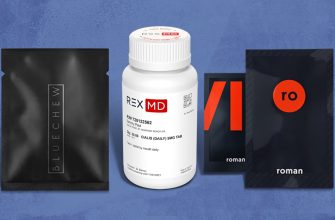Grab the Sonuscore Strings Essentials pack. At under $50, it offers a surprisingly robust collection of articulations and playing techniques ideal for beginners and budget-conscious composers. Its small size means quick loading times, a significant advantage for those with less powerful computers.
Consider your needs carefully. Don’t be swayed by huge sample libraries boasting thousands of sounds if you mainly work within a specific genre. Focus on packs tailored to your workflow. For instance, if you produce electronic music, a targeted synthwave sample pack will be far more useful than a general orchestral one.
Explore less-known sample developers. Many smaller creators offer impressive quality at a fraction of the price charged by larger companies. Check out platforms like Splice and Beatport Sounds for hidden gems. You can often find high-quality packs for under $20.
Pro Tip: Regularly check for sales and bundles. Developers frequently discount older packs or group them into affordable bundles, allowing you to expand your sound library without breaking the bank. Follow your favorite developers on social media for updates on these deals.
- Cheap Sample Packs: A Buyer’s Guide
- Understanding File Formats
- Genre Focus and Sample Variety
- Licensing and Usage Rights
- Website Reputation and Support
- Budget and Expectations
- Identifying Legitimate and High-Quality Cheap Sample Packs
- Vetting Sample Pack Providers
- Analyzing Sample Quality
- Finding Reliable Sources
- Avoiding Scams
- Finding the Best Deals on Sample Packs: Tips and Tricks
- Bundle Up Your Savings
- Leverage Freebies and Demos
- Prioritize Quality Over Quantity
- Utilizing Cheap Sample Packs Effectively: Maximizing Value
- Sample Manipulation Techniques
- Beyond the DAW
Cheap Sample Packs: A Buyer’s Guide
Check reviews! Before purchasing, thoroughly examine user reviews on platforms like Reddit, Gearslutz, or dedicated sample pack review sites. Look for consistent feedback about sound quality, usability, and the pack’s overall value.
Understanding File Formats
Familiarize yourself with common audio formats (WAV, AIFF, etc.). WAV files are generally lossless, offering higher quality but larger file sizes. Consider your DAW’s compatibility and your storage space limitations when making your choice.
Genre Focus and Sample Variety
Select sample packs aligned with your musical style. A pack boasting extreme variety can be beneficial, but packs focusing on a specific genre often deliver higher-quality, more cohesive sounds. Explore the included sounds – are they unique? Do they spark your creativity?
Licensing and Usage Rights
Always check the license agreement! Understand the permitted uses – personal projects only? Commercial releases allowed? Royalty-free doesn’t always mean completely free of restrictions. Clarify this before purchasing to prevent legal issues later.
Website Reputation and Support
Choose reputable sellers. Look for secure payment gateways and readily available customer support channels. A quick response time to your questions indicates better service and greater trustworthiness.
Budget and Expectations
Low cost doesn’t always equal low quality, but it’s unrealistic to expect studio-grade sounds at bargain prices. Manage expectations and look for packs with strong reviews, despite their budget-friendly pricing. Prioritize quality over sheer quantity.
Identifying Legitimate and High-Quality Cheap Sample Packs
Check reviews! Focus on sites with user ratings and comments. A consistently high rating suggests quality and legitimacy.
Vetting Sample Pack Providers
- Look for transparency. Reputable providers clearly state the sample content, licensing, and any limitations.
- Examine the website. A professional-looking website with easy navigation increases trustworthiness.
- Assess the variety. A good pack provides diverse sounds, suitable for various music genres. Consider the number of samples and their formats (WAV, AIFF).
- Preview audio. Many providers offer demos. Listen carefully to ensure the samples match your expectations regarding quality and style.
Analyzing Sample Quality
- Sound quality. Listen for artifacts, noise, or other imperfections. High-quality samples are clean and well-recorded.
- Originality. Avoid packs with samples that sound overly generic or similar to readily available sounds. Look for unique character.
- Organization. A well-organized pack is easy to navigate and use. A logical folder structure greatly improves workflow.
- Licensing. Understand the license. Royalty-free is generally preferred for commercial use. Carefully check the terms.
Finding Reliable Sources
Explore dedicated sample marketplaces. Many reputable sites offer affordable sample packs. Compare prices and offerings before buying. Read comments and reviews thoroughly.
Avoiding Scams
- Be wary of unbelievably cheap packs. Extreme low prices often indicate low quality or potential scams.
- Use secure payment methods. Avoid suspicious payment platforms.
- Report suspicious activity. If you encounter anything questionable, report it to the relevant authorities or platform administrators.
Finding the Best Deals on Sample Packs: Tips and Tricks
Check for sales and discounts regularly. Many sample pack websites offer flash sales or seasonal promotions. Subscribe to newsletters for notifications; you’ll often find exclusive deals this way. Compare prices across different platforms before committing to a purchase. Sites like Splice, Loopmasters, and Producer Loops frequently run competing offers.
Bundle Up Your Savings
Buying sample packs in bundles usually yields significant savings compared to individual purchases. Look for “mega packs” or collections that offer a wider variety of sounds for a lower overall price. This strategy dramatically increases your sound library’s value.
Leverage Freebies and Demos
Many producers offer free sample packs to promote their work or as a way to build a following. Explore free resources on websites like Reddit’s r/edmproduction or YouTube channels dedicated to free sample packs. Listen to demos carefully; this helps you determine if a pack’s style truly fits your needs, before purchasing.
Prioritize Quality Over Quantity
A smaller pack with high-quality, versatile sounds will serve you better than a massive pack filled with unusable samples. Carefully review the pack’s demos and read user reviews to ensure quality.
Utilizing Cheap Sample Packs Effectively: Maximizing Value
Organize your samples immediately. Create folders based on instrument type, genre, or mood. This drastically speeds up workflow.
Experiment with layering and blending. Combine seemingly unrelated samples to create unique sounds. Try adding subtle reverb or delay to enhance depth.
Don’t just rely on the presets. Process your samples with EQ, compression, saturation, and other effects. Shape the sound to fit your specific needs.
Sample Manipulation Techniques
Try pitch shifting and time-stretching samples creatively. A slightly detuned vocal sample can add a haunting effect. Slowing down a percussion loop can create a heavy, ominous vibe.
Beyond the DAW
Use your samples outside your DAW. Import them into a sampler instrument and experiment with its built-in effects or modulation features. This can unearth unexpected sounds.
Remember to always credit the original creator of the sample pack in your project’s credits when releasing or performing work publicly. This is respectful and often legally required.






